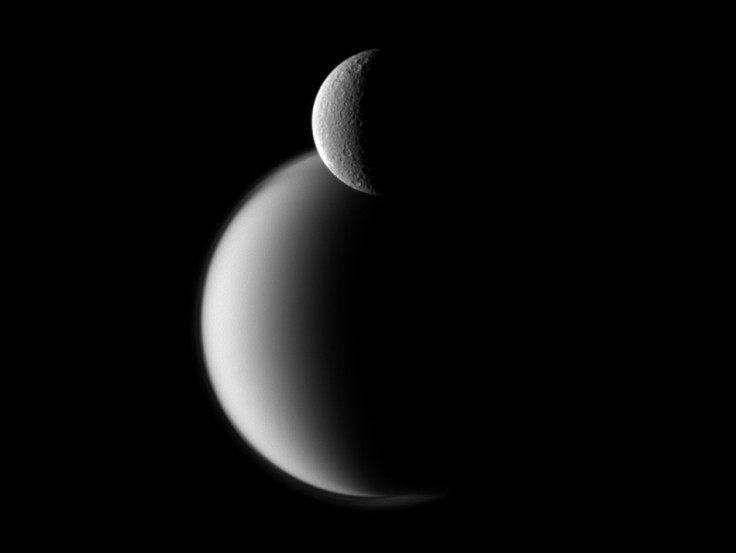NASA Cassini Catches Saturn’s Moons in Straight Line

A photograph taken by NASA's Cassini spacecraft shows Saturn's largest moon - Titan - in the foreground, with its third-largest moon - Dione - nestled just behind it. It also shows the heavily cratered Rhea in the foreground, with the hazy image of Titan in the distance.
The photograph was snapped in visible green light with the Cassini spacecraft narrow-angle camera on Dec. 10 and was released to the public on Monday, Feb. 13.
The spacecraft was about 1.3 million kilometers (808,000 miles) from Rhea and 2 million kilometers (1.2 million miles) from Titan when it took the picture, researchers said.
Titan is the largest of Saturn's many satellites and is 5,150 kilometers (3,200 miles) wide. It is nearly 1.5 times bigger than Earth's moon. Rhea, meanwhile, is Saturn's second-largest moon, measuring 1,528 kilometers (949 miles) ni diameter.
Cassini was launched in 1997 and arrived at Saturn in 2004. The spacecraft is on a mission to explore Saturn and its moons. It has been studying the ringed planet and its many moons ever since and will continue to do so for years to come. Last year, NASA extended the probe's mission to at least 2017.
© Copyright IBTimes 2025. All rights reserved.





















